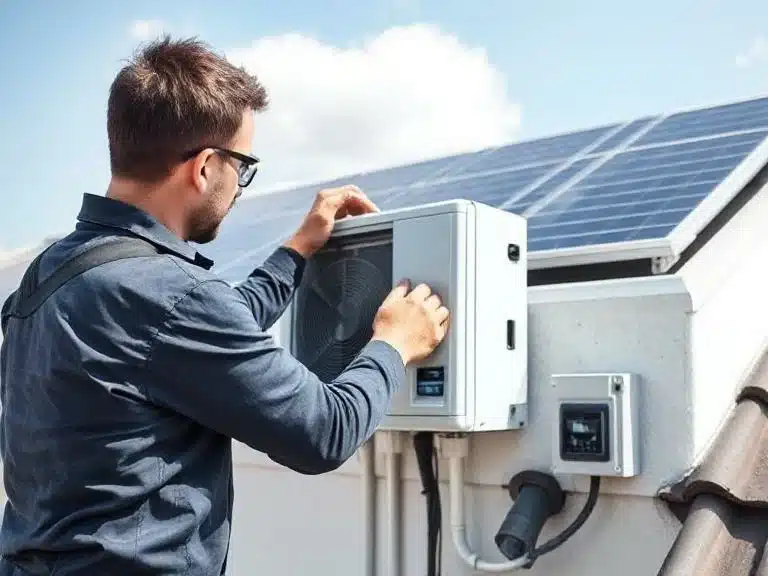Solar Power :: As solar panels become more common on rooftops and in fields around the world, one critical component often goes unnoticed: the inverter. While solar panels capture sunlight and generate electricity, it’s the inverter that makes this power usable in our homes, businesses, and digital devices.
But in today’s world—filled with smart homes, EV chargers, and sensitive electronics—solar inverters must do more than just convert DC to AC. They must intelligently sync solar energy with modern technology needs.
Let’s break it down.
🔄 What Does a Solar Inverter Actually Do?
At its core, a solar inverter converts direct current (DC) electricity (produced by solar panels) into alternating current (AC) electricity (used by most household appliances and the power grid). Without this conversion, solar energy wouldn’t power your lights, laptop, or coffee machine.
🌐 Meeting the Needs of Modern Tech
Today’s homes and industries aren’t just consuming power—they’re interacting with it. Devices are smarter, grids are more dynamic, and energy management is increasingly digital.
Modern inverters adapt by offering features like:
- Grid Synchronization: Inverters ensure that solar power is in sync with the grid’s voltage and frequency. This prevents damage and supports grid stability.
- Smart Monitoring: Many inverters now come with apps or cloud dashboards, allowing users to track real-time performance, efficiency, and system health.
- Power Quality Management: Sensitive devices like servers, smart TVs, and medical equipment need stable voltage. Advanced inverters smooth out fluctuations and prevent spikes.
- Battery Integration: Hybrid inverters can manage both solar panels and battery storage, ensuring seamless energy use even during outages or at night.
- Communication Protocols: Inverters now “talk” to other smart devices (like EV chargers, thermostats, or energy meters) using protocols like Modbus, Zigbee, or Wi-Fi to optimize energy flow.
⚙️ Inverters: The Brains Behind the Panels
Think of the inverter as the brain of the solar system. While panels are the energy source, inverters manage where that energy goes, how it’s used, and how it integrates with everything else in your digital life—from your smart fridge to your backup battery system.
📚 Frequently Asked Questions (FAQ)
🔌 1. Why can’t solar panels directly power my home?
Solar panels produce DC electricity, but most homes and appliances use AC electricity. An inverter converts that DC into usable AC.
⚡ 2. What happens if my inverter fails?
If the inverter fails, your solar system can’t convert power, so your home won’t use solar energy until it’s fixed or replaced. Most solar warranties cover inverter issues for 5–10 years.
🔋 3. Do I need a special inverter to use batteries with solar?
Yes. You’ll need a hybrid inverter or a separate battery inverter to properly integrate storage systems with solar panels.
📶 4. Can inverters connect to smart home systems?
Absolutely. Many modern inverters offer Wi-Fi connectivity and can integrate with home automation systems for better energy management and real-time monitoring.
🌞 5. Is a more expensive inverter worth it?
Generally, yes. Premium inverters often offer better efficiency, longer warranties, and advanced features like remote diagnostics, battery compatibility, and superior build quality.
🌍 Conclusion
As solar adoption grows, inverters are evolving from simple converters into intelligent energy managers. They ensure that solar energy not only powers our homes but also keeps pace with the fast-evolving tech within them.

